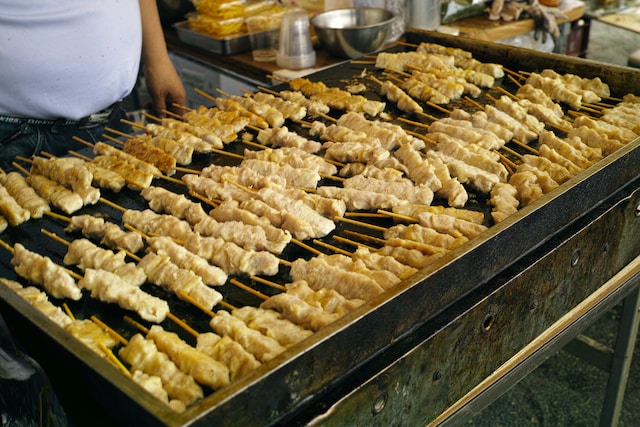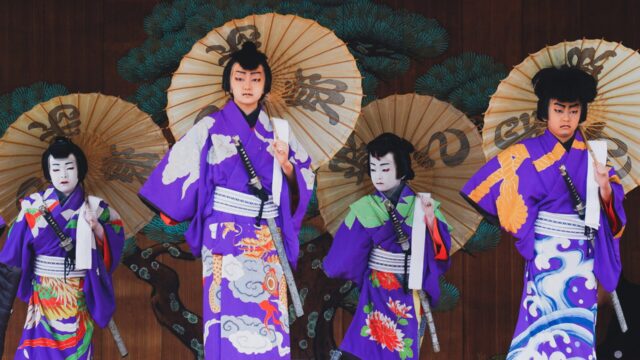When we think of Japanese cuisine, sushi and ramen often steal the spotlight. But, deep in the bustling streets of Tokyo, Osaka, and other cities, lies a culinary treasure that’s equally tantalizing: Yakitori. For travelers venturing to Japan, a trip is simply incomplete without experiencing the magic of these skewered delights. In this blog, we’ll deep dive into the world of yakitori, ensuring your next trip to the Land of the Rising Sun is flavored with authenticity and excitement.
1. What is Yakitori?
Yakitori, at its core, is skewered, grilled chicken. However, to label it so simply wouldn’t do it justice.
- The term “yaki” means to grill, and “tori” is the word for bird, specifically chicken.
- Unlike its counterparts from other cuisines, yakitori is meticulously prepared, emphasizing different parts of the chicken, from breast and thigh to liver and skin.
- The preparation involves skewering the meat with kushi (bamboo sticks) before grilling them over charcoal.
- A choice of tare sauce (sweet and savory) or shio (salt) seasoning is available for flavoring.
- Every bite is a harmonious blend of smokiness, juiciness, and authentic Japanese seasoning.
2. The Rich History Behind Yakitori
This delicacy has roots that run deep in Japanese culture.
- Yakitori began its journey during the Meiji era, becoming popular in the 20th century.
- It was initially seen as a way to utilize every part of the chicken, ensuring no waste.
- Street vendors and small stalls, or “yatai,” played a crucial role in popularizing yakitori.
- These humble beginnings gave rise to the numerous specialized yakitori restaurants, or “yakitori-ya”, we see today.
- Despite its evolving presentation, the heart and soul of yakitori — its essence of resourcefulness and craftsmanship — remains unchanged.
3. Exploring Different Types of Yakitori
Beyond the classic chicken pieces, there’s a plethora of options waiting to be explored.
- Negima: Alternating pieces of chicken and green onion.
- Tsukune: Minced chicken meatballs, often with a tare glaze.
- Hatsu: Chicken heart, boasting a unique texture and rich flavor.
- Kawa: Crispy chicken skin, a must-try for texture enthusiasts.
- Shiro: Creamy chicken intestines, an adventurous choice for the curious palate.
4. Pairing Your Yakitori: Drinks and Side Dishes
Yakitori isn’t just about the skewers; it’s an entire experience.
- Sake: The quintessential Japanese rice wine is a popular choice with yakitori. The clean taste of sake complements the smoky skewers perfectly.
- Shochu: A versatile distilled spirit, shochu can be enjoyed with a splash of water or on the rocks.
- Beer: Cold beer and hot yakitori is a match made in heaven.
- As for sides, consider ordering some edamame (salted green soybeans) or tsukemono (Japanese pickles) to refresh your palate.
- Don’t forget to try some rice or miso soup for a complete meal experience.
5. Tips for Your First Yakitori Experience
Diving into the world of yakitori might feel overwhelming, but these tips will ensure a memorable experience.
- Don’t hesitate to ask the chef for recommendations; they usually have a few specialties.
- Embrace the adventurous spirit! Try a variety of skewers to find your favorite.
- Take note of the cooking process. The craftsmanship of the chef is a joy to watch.
- It’s customary to order drinks first in a yakitori-ya before delving into the skewers.
- Remember to say “Itadakimasu” (I gratefully receive) before you eat, showcasing your appreciation.
6. Venturing Beyond the Yakitori-ya
If you’re keen to delve deeper, consider:
- Trying DIY yakitori at home. All you need are bamboo skewers, chicken, and your preferred seasoning.
- Exploring different regions in Japan, as each area may have its unique yakitori style or flavor.
- Visiting during local festivals. Street vendors often serve yakitori, offering a different ambiance compared to traditional restaurants.
- Joining a yakitori cooking class to understand the intricacies of preparation and grilling.
- Documenting your yakitori journey, sharing your experiences, and inspiring fellow travelers.





